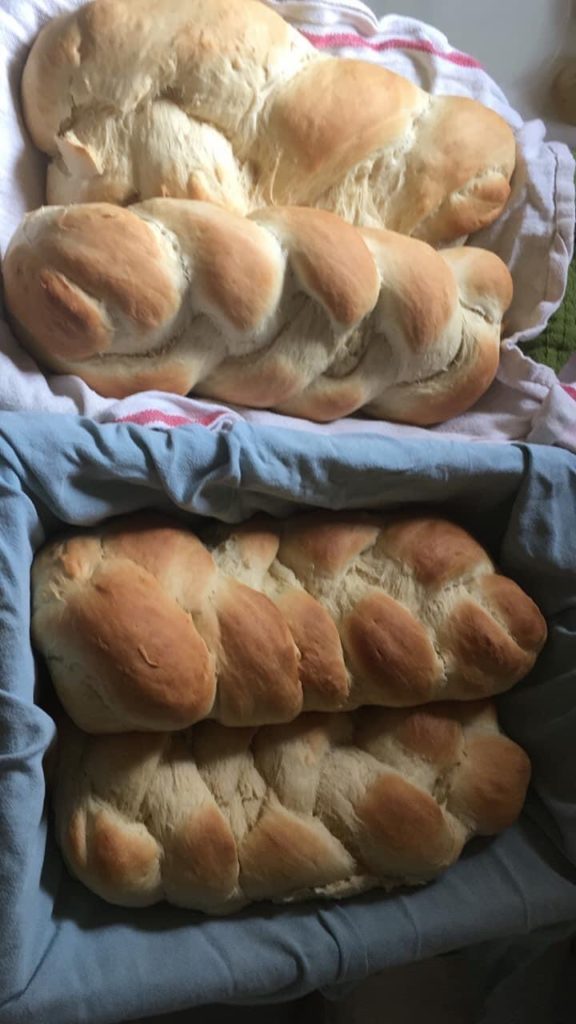Bread is a common food in every culture I can think of. One of my favorite breads from Israel is Challah Bread.
Challah is a brioche-type bread made with eggs. It is sweetened with honey and uses oil instead of the butter used in brioche. If you search for recipes, you can find many of them. And I’m sure, at least from the bakers I know, there are lots of variations of each one. I use the same recipe as my daughter, but both of us change it for different situations. The most significant difference I’ve found is the amount of honey to use.
Challah is a bread of celebration and is commonly served on Shabbat. This bread is braided into a loaf as in these pictures. Since I consider anytime I’m with family and friends as a celebration, I make it a lot.
During the celebrations of Rosh Hashana, Yom Kipper [as one of the foods used to break the fast of Yom Kipper], and Sukkot, challah is braided into a circle or a crown. The circle is studded with raisins. I also found one reference to braiding it into a crown in honor of Queen Esther on Purim.
While it isn’t tradition, I’ve found using challah as the base for cinnamon rolls can be very popular during coffee time at church.


